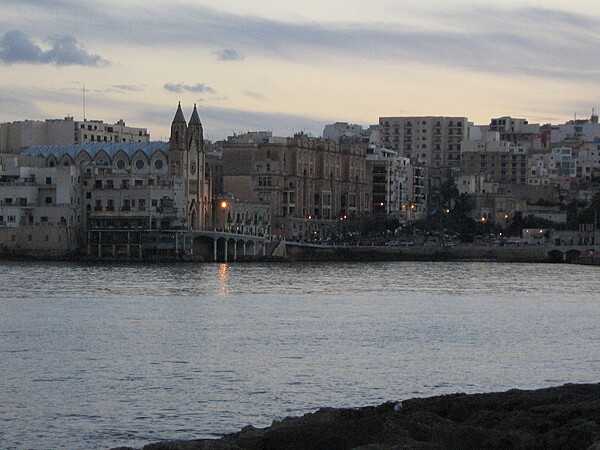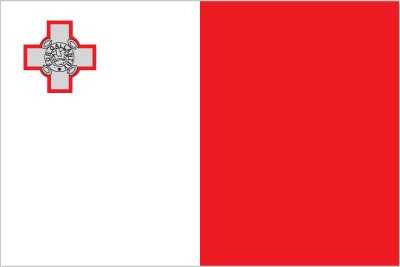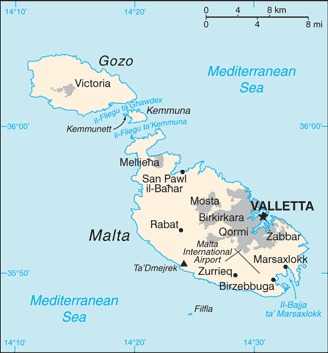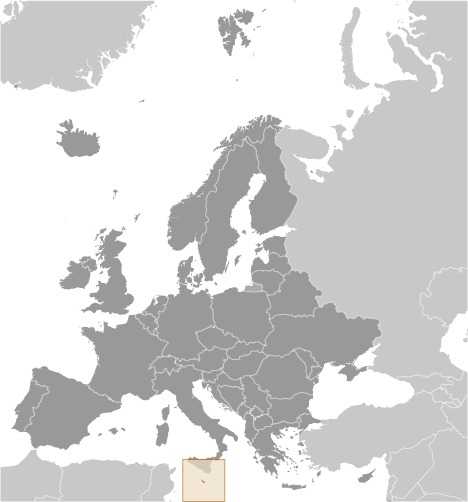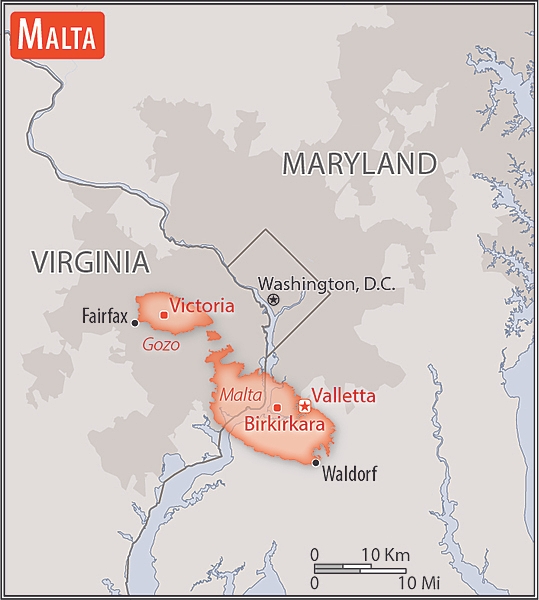Introduction
Background
With a civilization that dates back thousands of years, Malta boasts some of the oldest megalithic sites in the world. Situated in the center of the Mediterranean, Malta’s islands have long served as a strategic military asset, with the islands at various times falling under the control of the Phoenicians, Carthaginians, Greeks, Romans, Byzantines, Moors, Normans, Sicilians, Spanish, Knights of St. John, and French. Most recently a British colony (since 1814), Malta gained its independence in 1964 and declared itself a republic 10 years later. While under British rule, the island staunchly supported the UK through both world wars. Since the mid-1980s, the island has transformed itself into a freight transshipment point, a financial center, and a tourist destination, as its key industries moved toward more service-oriented activities. Malta became an EU member in 2004 and joined the eurozone in 2008.
Visit the Definitions and Notes page to view a description of each topic.
Geography
Location
Southern Europe, islands in the Mediterranean Sea, south of Sicily (Italy)
Geographic coordinates
35 50 N, 14 35 E
Map references
Europe
Land boundaries
total: 0 km
Coastline
196.8 km (excludes 56 km for the island of Gozo)
Maritime claims
territorial sea: 12 nm
contiguous zone: 24 nm
continental shelf: 200-m depth or to the depth of exploitation
exclusive fishing zone: 25 nm
Climate
Mediterranean; mild, rainy winters; hot, dry summers
Terrain
mostly low, rocky, flat to dissected plains; many coastal cliffs
Elevation
highest point: Ta'Dmejrek on Dingli Cliffs 253 m
lowest point: Mediterranean Sea 0 m
Natural resources
limestone, salt, arable land
Land use
agricultural land: 32.3% (2018 est.)
arable land: 28.4% (2018 est.)
permanent crops: 3.9% (2018 est.)
permanent pasture: 0% (2018 est.)
forest: 0.9% (2018 est.)
other: 66.8% (2018 est.)
Irrigated land
35 sq km (2020)
Population distribution
most of the population lives on the eastern half of Malta, the largest of the three inhabited islands
Natural hazards
occasional droughts
Geography - note
the country comprises an archipelago, with only the three largest islands (Malta, Ghawdex or Gozo, and Kemmuna or Comino) inhabited; numerous bays provide good harbors; Malta and Tunisia are discussing oil exploration on the continental shelf between their countries, although no commercially viable reserves have been found as of 2017
People and Society
Population
total: 469,730
male: 237,023
female: 232,707 (2024 est.)
comparison rankings: female 174; male 174; total 174
Nationality
noun: Maltese (singular and plural)
adjective: Maltese
Ethnic groups
Maltese (descendants of ancient Carthaginians and Phoenicians with strong elements of Italian and other Mediterranean stock)
Languages
Maltese (official) 90.1%, English (official) 6%, multilingual 3%, other 0.9% (2005 est.)
Religions
Roman Catholic (official) more than 90% (2006 est.)
Age structure
0-14 years: 14.5% (male 35,034/female 33,181)
15-64 years: 62.4% (male 151,836/female 141,248)
65 years and over: 23.1% (2024 est.) (male 50,153/female 58,278)
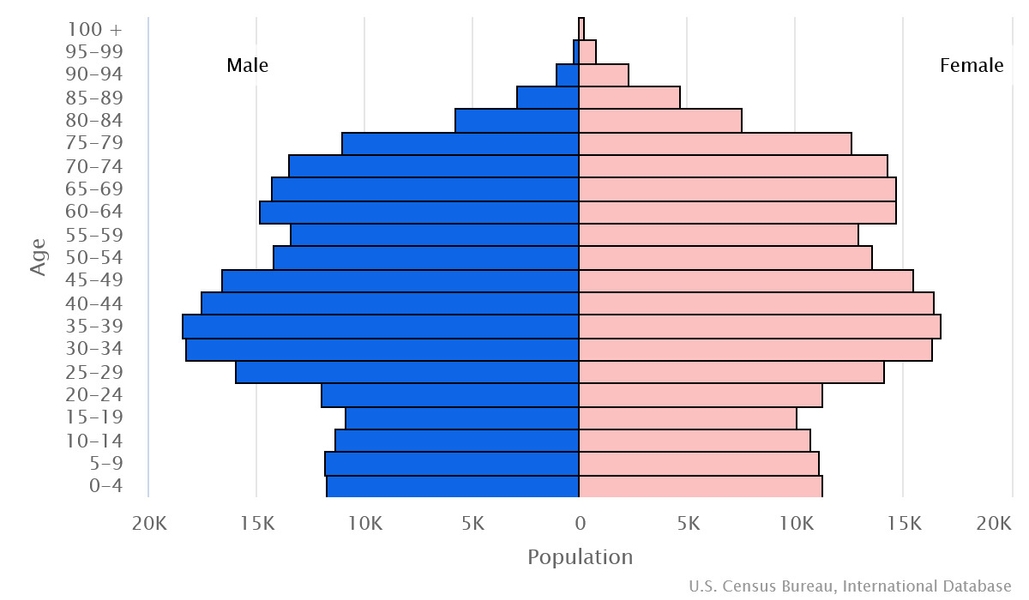
Dependency ratios
total dependency ratio: 47.1
youth dependency ratio: 19.3
elderly dependency ratio: 27.7
potential support ratio: 3.6 (2021 est.)
Median age
total: 43.5 years (2024 est.)
male: 42.4 years
female: 44.7 years
comparison ranking: total 35
Population distribution
most of the population lives on the eastern half of Malta, the largest of the three inhabited islands
Urbanization
urban population: 94.9% of total population (2023)
rate of urbanization: 0.28% annual rate of change (2020-25 est.)
Major urban areas - population
213,000 VALLETTA (capital) (2018)
Sex ratio
at birth: 1.04 male(s)/female
0-14 years: 1.06 male(s)/female
15-64 years: 1.07 male(s)/female
65 years and over: 0.86 male(s)/female
total population: 1.02 male(s)/female (2024 est.)
Mother's mean age at first birth
29.3 years (2020 est.)
note: data refers to the average of the different childbearing ages of first-order births
Infant mortality rate
total: 4.4 deaths/1,000 live births (2024 est.)
male: 4.3 deaths/1,000 live births
female: 4.5 deaths/1,000 live births
comparison ranking: total 182
Life expectancy at birth
total population: 83.6 years (2024 est.)
male: 81.5 years
female: 85.8 years
comparison ranking: total population 12
Gross reproduction rate
0.74 (2024 est.)
Drinking water source
improved: urban: 100% of population
rural: 100% of population
total: 100% of population
unimproved: urban: 0% of population
rural: 0% of population
total: 0% of population (2020 est.)
Current health expenditure
10.8% of GDP (2020)
Physicians density
2.86 physicians/1,000 population (2015)
Hospital bed density
4.5 beds/1,000 population (2017)
Sanitation facility access
improved: urban: 100% of population
rural: 100% of population
total: 100% of population
unimproved: urban: 0% of population
rural: 0% of population
total: 0% of population (2020 est.)
Alcohol consumption per capita
total: 8.07 liters of pure alcohol (2019 est.)
beer: 2.8 liters of pure alcohol (2019 est.)
wine: 2.34 liters of pure alcohol (2019 est.)
spirits: 2.51 liters of pure alcohol (2019 est.)
other alcohols: 0.42 liters of pure alcohol (2019 est.)
comparison ranking: total 43
Tobacco use
total: 24% (2020 est.)
male: 26.4% (2020 est.)
female: 21.6% (2020 est.)
comparison ranking: total 56
Currently married women (ages 15-49)
63.2% (2023 est.)
Literacy
definition: age 15 and over can read and write
total population: 94.9%
male: 93.4%
female: 96.4% (2021)
School life expectancy (primary to tertiary education)
total: 17 years
male: 17 years
female: 18 years (2020)
Environment
Environment - current issues
limited natural freshwater resources; increasing reliance on desalination; deforestation; wildlife preservation
Environment - international agreements
party to: Air Pollution, Biodiversity, Climate Change, Climate Change-Kyoto Protocol, Climate Change-Paris Agreement, Comprehensive Nuclear Test Ban, Desertification, Endangered Species, Hazardous Wastes, Law of the Sea, Marine Dumping-London Convention, Nuclear Test Ban, Ozone Layer Protection, Ship Pollution, Tropical Timber 2006, Wetlands
signed, but not ratified: none of the selected agreements
Climate
Mediterranean; mild, rainy winters; hot, dry summers
Land use
agricultural land: 32.3% (2018 est.)
arable land: 28.4% (2018 est.)
permanent crops: 3.9% (2018 est.)
permanent pasture: 0% (2018 est.)
forest: 0.9% (2018 est.)
other: 66.8% (2018 est.)
Urbanization
urban population: 94.9% of total population (2023)
rate of urbanization: 0.28% annual rate of change (2020-25 est.)
Air pollutants
particulate matter emissions: 12.93 micrograms per cubic meter (2019 est.)
carbon dioxide emissions: 1.34 megatons (2016 est.)
methane emissions: 0.2 megatons (2020 est.)
Waste and recycling
municipal solid waste generated annually: 269,000 tons (2015 est.)
municipal solid waste recycled annually: 17,996 tons (2015 est.)
percent of municipal solid waste recycled: 6.7% (2015 est.)
Total water withdrawal
municipal: 40 million cubic meters (2020 est.)
industrial: 1 million cubic meters (2020 est.)
agricultural: 20 million cubic meters (2020 est.)
Total renewable water resources
50 million cubic meters (2020 est.)
Government
Country name
conventional long form: Republic of Malta
conventional short form: Malta
local long form: Repubblika ta' Malta
local short form: Malta
etymology: the ancient Greeks called the island "Melite" meaning "honey-sweet" from the Greek word "meli" meaning "honey" and referring to the island's honey production
Government type
parliamentary republic
Capital
name: Valletta
geographic coordinates: 35 53 N, 14 30 E
time difference: UTC+1 (6 hours ahead of Washington, DC, during Standard Time)
daylight saving time: +1hr, begins last Sunday in March; ends last Sunday in October
etymology: named in honor of Jean de VALETTE, the Grand Master of the Order of Saint John (crusader knights), who successfully led a defense of the island from an Ottoman invasion in 1565
Administrative divisions
68 localities (Il-lokalita); Attard, Balzan, Birgu, Birkirkara, Birzebbuga, Bormla, Dingli, Fgura, Floriana, Fontana, Ghajnsielem, Gharb, Gharghur, Ghasri, Ghaxaq, Gudja, Gzira, Hamrun, Iklin, Imdina, Imgarr, Imqabba, Imsida, Imtarfa, Isla, Kalkara, Kercem, Kirkop, Lija, Luqa, Marsa, Marsaskala, Marsaxlokk, Mellieha, Mosta, Munxar, Nadur, Naxxar, Paola, Pembroke, Pieta, Qala, Qormi, Qrendi, Rabat, Rabat (Ghawdex), Safi, San Giljan/Saint Julian, San Gwann/Saint John, San Lawrenz/Saint Lawrence, Sannat, San Pawl il-Bahar/Saint Paul's Bay, Santa Lucija/Saint Lucia, Santa Venera/Saint Venera, Siggiewi, Sliema, Swieqi, Tarxien, Ta' Xbiex, Valletta, Xaghra, Xewkija, Xghajra, Zabbar, Zebbug, Zebbug (Ghawdex), Zejtun, Zurrieq
Independence
21 September 1964 (from the UK)
National holiday
Independence Day, 21 September (1964); Republic Day, 13 December (1974)
Constitution
history: many previous; latest adopted 21 September 1964
amendments: proposals (Acts of Parliament) require at least two-thirds majority vote by the House of Representatives; passage of Acts requires majority vote by referendum, followed by final majority vote by the House and assent of the president of the republic; amended many times, last in 2020
Legal system
mixed legal system of English common law and civil law based on the Roman and Napoleonic civil codes; subject to European Union law
International law organization participation
accepts compulsory ICJ jurisdiction with reservations; accepts ICCt jurisdiction
Citizenship
citizenship by birth: no
citizenship by descent only: at least one parent must be a citizen of Malta
dual citizenship recognized: no
residency requirement for naturalization: 5 years
Suffrage
18 years of age (16 in local council elections); universal
Executive branch
chief of state: President Myriam Spiteri DEBONO (since 4 April 2024)
head of government: Prime Minister Robert ABELA (13 January 2020)
cabinet: Cabinet appointed by the president on the advice of the prime minister
elections/appointments: president indirectly elected by the House of Representatives for a single 5-year term; election last held on 27 March 2024 (next to be held by March 2029); following legislative elections, the leader of the majority party or majority coalition usually appointed prime minister by the president for a 5-year term; deputy prime minister appointed by the president on the advice of the prime minister
election results: 2024: Myriam SPITERI DEBONO elected president; House of representatives vote - unanimous
2020: Robert ABELA (PL) appointed prime minister
2019: George VELLA (PL) elected president; House of Representatives vote - unanimous
Legislative branch
description: unicameral House of Representatives or Il-Kamra Tad-Deputati, a component of the Parliament of Malta (65 seats statutory, 79 for 2022-2027 term; members directly elected in 5 multi-seat constituencies by proportional representation vote; members serve 5-year terms)
elections: last held on 26 March 2022 (next to be held in 2027)
election results: percent of vote by party - PL 55.1%, PN 41.7%, other 3.2%; seats by party - PL 38, PN 29; composition as of February 2024 - men 57, women 22, percentage women 27.9%; note - due to underepresentation by women in the combined general on 26 March and two casual elections on 7 and 12 April (10 seats or 14.9%), an additional 12 seats were awarded because their percentage did not meet the 40% threshold required by the Malta Constitution or the General Elections Amendment Act 2021
Judicial branch
highest court(s): Court of Appeal (consists of either 1 or 3 judges); Constitutional Court (consists of 3 judges); Court of Criminal Appeal (consists of either 1 or 3 judges)
judge selection and term of office: Court of Appeal and Constitutional Court judges appointed by the president, usually upon the advice of the prime minister; judges of both courts serve until age 65
subordinate courts: Civil Court (divided into the General Jurisdiction Section, Family Section, and Voluntary Section); Criminal Court; Court of Magistrates; Gozo Courts (for the islands of Gozo and Comino)
Political parties and leaders
AD+PD or ADPD [Carmel CACOPARDO] (formed from the merger of Democratic Alternative or AD and Democratic Party (Partit Demokratiku) or PD)
Labor Party (Partit Laburista) or PL [Robert ABELA]
Nationalist Party (Partit Nazzjonalista) or PN [Bernard GRECH]
International organization participation
Australia Group, C, CD, CE, EAPC, EBRD, ECB, EIB, EMU, EU, FAO, IAEA, IBRD, ICAO, ICC (NGOs), ICCt, ICRM, IDA, IFAD, IFC, IFRCS, ILO, IMF, IMO, IMSO, Interpol, IOC, IOM, IPU, ISO, ITSO, ITU, ITUC (NGOs), MIGA, NATO (partner), NSG, OAS (observer), OPCW, OSCE, PCA, PFP, Schengen Convention, UN, UNCTAD, UNESCO, UNIDO, Union Latina (observer), UNWTO, UPU, Wassenaar Arrangement, WCO, WHO, WIPO, WMO, WTO
Diplomatic representation in the US
chief of mission: Ambassador Godfrey C. XUEREB (since 19 April 2023)
chancery: 2017 Connecticut Avenue NW, Washington, DC 20008; note - The Embassy of Malta has relocated until further notice to the following address due to ongoing refurbishment:
C/O WeWork Flr 2
1333 New Hampshire Ave NW
Washington DC, 20036
telephone: [1] (202) 462-3611; note - The Embassy of Malta has relocated until further notice due to ongoing refurbishment and can be reached at the following number: [1] (202) 286-4610
FAX: [1] (202) 387-5470; note - The Embassy of Malta has relocated until further notice due to ongoing refurbishment and can be reached by FAX at the following number: [1] (202) 530-9753
email address and website:
maltaembassy.washington@gov.mt
https://foreignandeu.gov.mt/en/Embassies/ME_United_States/Pages/ME_United_States.aspx
Diplomatic representation from the US
chief of mission: Ambassador Constance J. MILSTEIN (since October 27, 2022)
embassy: Ta' Qali National Park, Attard, ATD 4000
mailing address: 5800 Valletta Place, Washington DC 20521-5800
telephone: [356] 2561-4000
email address and website:
ACSMalta@state.gov
https://mt.usembassy.gov/
Flag description
two equal vertical bands of white (hoist side) and red; in the upper hoist-side corner is a representation of the George Cross, edged in red; according to legend, the colors are taken from the red and white checkered banner of Count Roger of Sicily who removed a bi-colored corner and granted it to Malta in 1091; an uncontested explanation is that the colors are those of the Knights of Saint John who ruled Malta from 1530 to 1798; in 1942, King George VI of the UK awarded the George Cross to the islanders for their exceptional bravery and gallantry in World War II; since independence in 1964, the George Cross bordered in red has appeared directly on the white field
National symbol(s)
Maltese eight-pointed cross; national colors: red, white
National anthem
name: "L-Innu Malti" (The Maltese Anthem)
lyrics/music: Dun Karm PSAILA/Robert SAMMUT
note: adopted 1945; written in the form of a prayer
National heritage
total World Heritage Sites: 3 (all cultural)
selected World Heritage Site locales: City of Valletta; Ħal Saflieni Hypogeum; Megalithic Temples of Malta
Economy
Economic overview
high-income, EU-member European economy; diversified portfolio; euro user; dependent on food and energy imports; strong tourism, trade, and manufacturing sectors; high North African immigration; large welfare system; educated workforce
Real GDP (purchasing power parity)
$25.834 billion (2022 est.)
$24.163 billion (2021 est.)
$21.517 billion (2020 est.)
note: data in 2017 dollars
comparison ranking: 147
Real GDP growth rate
6.92% (2022 est.)
12.3% (2021 est.)
-8.08% (2020 est.)
note: annual GDP % growth based on constant local currency
comparison ranking: 43
Real GDP per capita
$48,600 (2022 est.)
$46,600 (2021 est.)
$41,800 (2020 est.)
note: data in 2017 dollars
comparison ranking: 36
GDP (official exchange rate)
$18.126 billion (2022 est.)
note: data in current dollars at official exchange rate
Inflation rate (consumer prices)
6.15% (2022 est.)
1.5% (2021 est.)
0.64% (2020 est.)
note: annual % change based on consumer prices
comparison ranking: 97
Credit ratings
Fitch rating: A+ (2017)
Moody's rating: A2 (2019)
Standard & Poors rating: A- (2016)
note: The year refers to the year in which the current credit rating was first obtained.
GDP - composition, by sector of origin
agriculture: 1.1% (2017 est.)
industry: 10.2% (2017 est.)
services: 88.7% (2017 est.)
comparison rankings: services 11; industry 204; agriculture 195
GDP - composition, by end use
household consumption: 45.2% (2017 est.)
government consumption: 15.3% (2017 est.)
investment in fixed capital: 21.1% (2017 est.)
investment in inventories: 0.3% (2017 est.)
exports of goods and services: 136.1% (2017 est.)
imports of goods and services: -117.9% (2017 est.)
Agricultural products
milk, tomatoes, onions, potatoes, cauliflower/broccoli, pork, chicken, cabbages, pumpkins/squash, grapes (2022)
note: top ten agricultural products based on tonnage
Industries
tourism, electronics, ship building and repair, construction, food and beverages, pharmaceuticals, footwear, clothing, tobacco, aviation services, financial services, information technology services
Industrial production growth rate
4.3% (2014 est.)
note: annual % change in industrial value added based on constant local currency
comparison ranking: 78
Labor force
295,000 (2022 est.)
note: number of people ages 15 or older who are employed or seeking work
comparison ranking: 167
Unemployment rate
2.92% (2022 est.)
3.39% (2021 est.)
4.35% (2020 est.)
note: % of labor force seeking employment
comparison ranking: 37
Youth unemployment rate (ages 15-24)
total: 9.8% (2021 est.)
male: 13.6%
female: 5.8%
comparison ranking: total 155
Population below poverty line
16.7% (2021 est.)
note: % of population with income below national poverty line
Gini Index coefficient - distribution of family income
31.4 (2020 est.)
note: index (0-100) of income distribution; higher values represent greater inequality
comparison ranking: 138
Household income or consumption by percentage share
lowest 10%: 3.1%
highest 10%: 25.1% (2020 est.)
note: % share of income accruing to lowest and highest 10% of population
Remittances
1.25% of GDP (2022 est.)
1.49% of GDP (2021 est.)
1.7% of GDP (2020 est.)
note: personal transfers and compensation between resident and non-resident individuals/households/entities
Budget
revenues: $5.661 billion (2019 est.)
expenditures: $5.586 billion (2019 est.)
Public debt
50.7% of GDP (2017 est.)
56.3% of GDP (2016 est.)
note: Malta reports public debt at nominal value outstanding at the end of the year, according to guidelines set out in the Maastricht Treaty for general government gross debt; the data include the following categories of government liabilities (as defined in ESA95): currency and deposits (AF.2), securities other than shares excluding financial derivatives (AF.3, excluding AF.34), and loans (AF.4); general government comprises the central, state, and local governments, and social security funds
comparison ranking: 103
Taxes and other revenues
23.77% (of GDP) (2021 est.)
note: central government tax revenue as a % of GDP
comparison ranking: 59
Fiscal year
calendar year
Current account balance
-$1.02 billion (2022 est.)
$214.463 million (2021 est.)
$348.601 million (2020 est.)
note: balance of payments - net trade and primary/secondary income in current dollars
comparison ranking: 124
Exports
$25.417 billion (2022 est.)
$25.533 billion (2021 est.)
$22.735 billion (2020 est.)
note: balance of payments - exports of goods and services in current dollars
comparison ranking: 84
Exports - partners
Germany 12%, Italy 6%, France 6%, Japan 5%, Singapore 5% (2022)
note: top five export partners based on percentage share of exports
Exports - commodities
integrated circuits, packaged medicine, refined petroleum, fish, postage stamps/documents (2022)
note: top five export commodities based on value in dollars
Imports
$23.883 billion (2022 est.)
$22.958 billion (2021 est.)
$20.164 billion (2020 est.)
note: balance of payments - imports of goods and services in current dollars
comparison ranking: 90
Imports - partners
Italy 14%, China 11%, South Korea 11%, Germany 10%, Canada 5% (2022)
note: top five import partners based on percentage share of imports
Imports - commodities
ships, refined petroleum, aircraft, integrated circuits, packaged medicine (2022)
note: top five import commodities based on value in dollars
Reserves of foreign exchange and gold
$1.199 billion (2022 est.)
$1.149 billion (2021 est.)
$930.464 million (2020 est.)
note: holdings of gold (year-end prices)/foreign exchange/special drawing rights in current dollars
comparison ranking: 144
Exchange rates
euros (EUR) per US dollar -
Exchange rates:
0.95 (2022 est.)
0.845 (2021 est.)
0.876 (2020 est.)
0.893 (2019 est.)
0.847 (2018 est.)
Energy
Electricity access
electrification - total population: 100% (2021)
Electricity
installed generating capacity: 784,000 kW (2020 est.)
consumption: 2,497,143,000 kWh (2019 est.)
exports: 4 million kWh (2020 est.)
imports: 420 million kWh (2020 est.)
transmission/distribution losses: 158 million kWh (2019 est.)
comparison rankings: imports 92; exports 97; installed generating capacity 139; transmission/distribution losses 63; consumption 145
Electricity generation sources
fossil fuels: 88.5% of total installed capacity (2020 est.)
nuclear: 0% of total installed capacity (2020 est.)
solar: 11.2% of total installed capacity (2020 est.)
wind: 0% of total installed capacity (2020 est.)
hydroelectricity: 0% of total installed capacity (2020 est.)
tide and wave: 0% of total installed capacity (2020 est.)
geothermal: 0% of total installed capacity (2020 est.)
biomass and waste: 0.3% of total installed capacity (2020 est.)
Coal
production: 0 metric tons (2020 est.)
consumption: 0 metric tons (2020 est.)
exports: 0 metric tons (2020 est.)
imports: 0 metric tons (2020 est.)
proven reserves: 0 metric tons (2019 est.)
Petroleum
total petroleum production: 0 bbl/day (2021 est.)
refined petroleum consumption: 54,000 bbl/day (2019 est.)
crude oil and lease condensate exports: 0 bbl/day (2018 est.)
crude oil and lease condensate imports: 0 bbl/day (2018 est.)
crude oil estimated reserves: 0 barrels (2021 est.)
Natural gas
production: 0 cubic meters (2021 est.)
consumption: 415.606 million cubic meters (2020 est.)
exports: 0 cubic meters (2021 est.)
imports: 415.606 million cubic meters (2020 est.)
proven reserves: 0 cubic meters (2021 est.)
Carbon dioxide emissions
9.576 million metric tonnes of CO2 (2019 est.)
from coal and metallurgical coke: 0 metric tonnes of CO2 (2019 est.)
from petroleum and other liquids: 8.831 million metric tonnes of CO2 (2019 est.)
from consumed natural gas: 745,000 metric tonnes of CO2 (2019 est.)
comparison ranking: total emissions 108
Communications
Telephones - fixed lines
total subscriptions: 259,120 (2022 est.)
subscriptions per 100 inhabitants: 49 (2021 est.)
comparison ranking: total subscriptions 115
Telephones - mobile cellular
total subscriptions: 644,955 (2021 est.)
subscriptions per 100 inhabitants: 122 (2021 est.)
comparison ranking: total subscriptions 171
Telecommunication systems
general assessment: Malta’s small telecom sector is among the most advanced in Europe; this has been helped by the topography, which has made it relatively easy for operators to expand the reach of their fiber infrastructure; with high mobile and broadband penetration rates, the government and regulator have effective strategies in place to capitalize on these infrastructure developments to ensure that the population has among the fastest data rates in Europe, and is well positioned to take advantage of emerging e-commerce opportunities; the sector has also been stimulated by regulatory measures designed to reduce consumer prices; the incumbent telco is investing in a sub sea cable to connect the islands to France and Egypt; expected to be ready for service in 2022, the cable will further enhance Malta’s internet bandwidth and lead to reduced prices for end-users; there has also been some encouragement to increase market competition (2021)
domestic: fixed-line approximately 49 per 100 persons and mobile-cellular subscribership 122 per 100 persons (2021)
international: country code - 356; landing points for the Malta-Gozo Cable, VMSCS, GO-1 Mediterranean Cable System, Malta Italy Interconnector, Melita-1, and the Italy-Malta submarine cable connections to Italy; satellite earth station - 1 Intelsat (Atlantic Ocean) (2019)
Broadcast media
2 publicly owned TV stations, Television Malta broadcasting nationally plus an educational channel; several privately owned national television stations, 2 of which are owned by political parties; Italian and British broadcast programs are available; multi-channel cable and satellite TV services are available; publicly owned radio broadcaster operates 3 stations; roughly 20 commercial radio stations (2019)
Internet users
total: 461,100 (2021 est.)
percent of population: 87% (2021 est.)
comparison ranking: total 168
Broadband - fixed subscriptions
total: 213,419 (2020 est.)
subscriptions per 100 inhabitants: 48 (2020 est.)
comparison ranking: total 117
Transportation
National air transport system
number of registered air carriers: 13 (2020)
inventory of registered aircraft operated by air carriers: 180
annual passenger traffic on registered air carriers: 2,576,898 (2018)
annual freight traffic on registered air carriers: 5.14 million (2018) mt-km
Heliports
2 (2024)
Merchant marine
total: 1,957 (2023)
by type: bulk carrier 490, container ship 348, general cargo 152, oil tanker 354, other 613
comparison ranking: total 14
Ports and terminals
major seaport(s): Marsaxlokk (Malta Freeport), Valletta
container port(s) (TEUs): Marsaxlokk (2,967,765) (2021)
LNG terminal(s) (import): Delimara
Military and Security
Military and security forces
the Armed Forces of Malta (AFM) is a joint force with land, maritime, and air elements, plus a Volunteer Reserve Force (2024)
note: the Malta Police Force maintains internal security; both the Police and the AFM report to the Ministry of Home Affairs, National Security, and Law Enforcement
Military expenditures
0.8% of GDP (2023 est.)
0.7% of GDP (2022)
0.5% of GDP (2021)
0.6% of GDP (2020)
0.5% of GDP (2019)
comparison ranking: 136
Military and security service personnel strengths
approximately 2,000 active-duty personnel (2023)
Military equipment inventories and acquisitions
the military has a small inventory that consists of equipment from a mix of European countries, particularly Italy and the US (2024)
Military service age and obligation
18-30 years of age for men and women for voluntary military service; no conscription (2024)
Military - note
the Armed Forces of Malta (AFM) are responsible for external security but also have some domestic security responsibilities; the AFM’s primary roles include maintaining the country’s sovereignty and territorial integrity, monitoring and policing its territorial waters, participating in overseas peacekeeping and stability operations, and providing search and rescue and explosive ordnance disposal capabilities; secondary missions include assisting civil authorities during emergencies, supporting the police and other security services, and providing ceremonial and other public support duties; the AFM has a joint force headquarters with five subordinate units—three land regiments, an air wing, and a maritime squadron; the air wing does not have any fighter aircraft but has both fixed and rotary wing aircraft for such tasks as maritime law enforcement and surveillance, reconnaissance, search and rescue, and transport; the maritime squadron is outfitted with both offshore patrol vessels and inshore patrol boats, and includes a small marine force element for maritime law enforcement and boarding operations, as well as a small land component tasked with defending the territorial integrity of the island of Gozo and providing military assistance to the Malta Police Force and other government departments
Malta maintains a security policy of neutrality but contributes to EU and UN military missions and joined NATO’s Partnership for Peace program in 1995 (suspended in 1996, but reactivated in 2008); it also participates in various bilateral and multinational military exercises; Malta cooperates closely with Italy on defense matters; in 1973, Italy established a military mission in Malta to provide advice, training, and search and rescue assistance (2023)
Space
Space agency/agencies
Malta Council for Science and Technology (MCST; established in 1988 by the Maltese Government as a public body to provide advice and coordinate on science, technology, and space-related issues) (2023)
Space program overview
the MSCT was originally established by the Maltese Government to provide advice on science and technology policy; its mission has since expanded to building relationships with foreign space agencies, the Maltese Government, industry, and the educational sector with the aim of exploring the use and sharing of space-related applications; the MCST acts for and on behalf of the Foundation for Science and Technology; it has established relationships with the European Space Agency (ESA), the French Space Agency (CNES), the Italian Space Agency (ASI), and Eurisy, a Paris-based, non-profit association that brings together space agencies, international organizations, research institutions, and private businesses involved or interested in space-related activities across Europe (2023)
note: further details about the key activities, programs, and milestones of the country’s space program, as well as government spending estimates on the space sector, appear in Appendix S
Transnational Issues
Refugees and internally displaced persons
refugees (country of origin): 5,890 (Ukraine) (as of 16 July 2023)
stateless persons: 11 (2022)
note: 8,556 estimated refugee and migrant arrivals by sea (January 2015-November 2022)
Illicit drugs
minor transshipment point for hashish from North Africa to Western Europe
